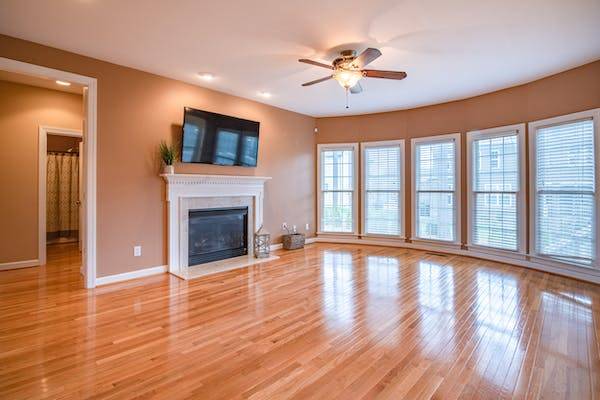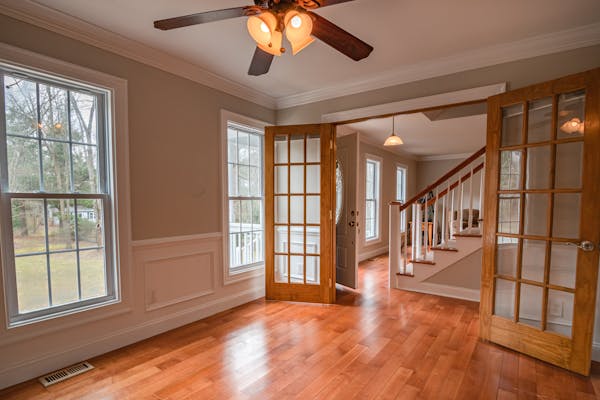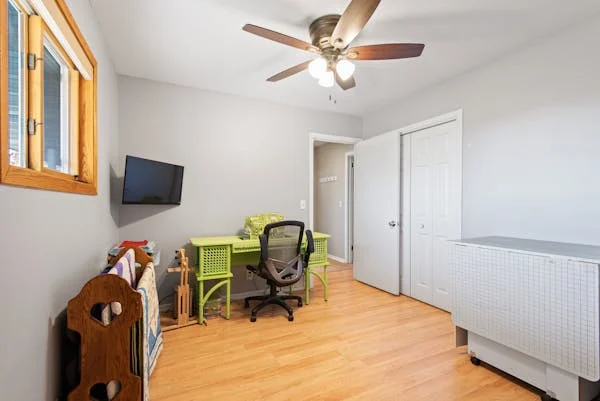Are your ceiling fan lights not working? Don’t worry, we’ve got you covered! In this article, we’ll provide you with some quick and effective solutions to get your ceiling fan lights up and running again in no time.
When your ceiling fan lights stop working, it can be frustrating and inconvenient. Luckily, many common issues can be resolved easily without the need for professional help. From troubleshooting the problem to replacing faulty bulbs, we’ll guide you through how to fix the ceiling fan.
So, if you’re ready to shed some light on the situation and bring back the illumination in your room, let’s dive into these quick fixes for ceiling fan lights not working!

Ceiling Fan Lights not working
Is your ceiling fan light not working? Don’t worry, we’re here to help! In this section, we will guide you through a step-by-step troubleshooting process to identify the root cause of the issue. You can identify and fix the issue with your ceiling fan lights fast by using these troubleshooting techniques.
Possible Electrical Issues
One of the first things to check when your ceiling fan lights are not working is the electrical connections. Make sure the fuse box or circuit breaker has not blown or tripped by checking it. If required, change the fuse or reset the breaker.
Additionally, check the wall switch that controls the fan lights. Make sure it is turned on and functioning properly. Sometimes, the switch may become faulty or loose, leading to the lights not working.
| Possible Electrical Issues | Troubleshooting Steps |
|---|---|
| Circuit breaker or fuse |
|
| Wall switch |
|
Faulty Bulbs
If the electrical connections are not the issue, the problem may lie with the bulbs themselves. Start by checking if the bulbs are properly screwed in and have not loosened over time. Sometimes, vibrations from the fan can cause the bulbs to become loose, resulting in them not working.
It’s also a good idea to inspect the bulbs for any visible signs of damage, such as a broken filament or blackened areas. If you notice any signs of damage, it’s likely that the bulbs need to be replaced.
Note: It’s important to use the correct type and wattage of bulbs recommended by the fan manufacturer. Using improper bulbs can lead to flickering, overheating, or even damage to the fan.
Other Common Problems
While electrical issues and faulty bulbs are the most common causes of ceiling fan lights not working, there are a few other potential problems to be aware of. These include:
- Loose wiring connections
- Defective light sockets
- Faulty fan remote control
If the ceiling fan troubleshooting steps mentioned above do not resolve the issue, it may be best to consult a professional electrician for further assistance.

Checking the Electrical Connections
When your ceiling fan lights are not working, one of the first things you should check is the electrical connections. Ensuring a secure and proper connection is crucial for the functionality of your lights. Loose wires or terminals could be the culprit behind the issue.
Here are the steps to check the electrical connections of your ceiling fan lights:
- Begin by switching off the power to the ceiling fan lights at the circuit breaker. This is an important safety measure.
- To access the electrical connections, remove the globe or cover from the light fixture.
- Inspect the wires and terminals for any signs of looseness or damage. Look for any blackened or burnt areas as well.
- Gently tighten any loose connections using a screwdriver or pliers. Ensure that the wires are properly seated in their respective terminals.
- If you notice any damaged wires or terminals, they will need to be replaced. Make sure to use the appropriate wire connectors and follow the manufacturer’s instructions.
- Once you have inspected and addressed the electrical connections, reassemble the light fixture cover or globe.
- Finally, restore power at the circuit breaker and test the ceiling fan lights to see if they are now working.
It’s important to note that working with electrical connections can be hazardous if you are not comfortable or experienced. If you have any doubts or concerns, it is always best to consult a professional electrician for assistance.
Expert Tip:
When checking the electrical connections, be thorough in your inspection. Even a slightly loose wire or terminal can cause the lights to malfunction. Take your time and ensure all connections are securely in place.
Affordable Low Profile Ceiling Fan with Light and Remote/APP Control: Check Price
Replacing Faulty Bulbs
If you’ve determined that the issue with your ceiling fan lights lies with the bulbs, don’t worry! Replacing faulty bulbs is a simple fix that you can easily do yourself. In this section, we’ll guide you through the process of safely removing and installing new bulbs, ensuring proper illumination in your space.
Types of Bulbs for Ceiling Fans
Before replacing the bulbs, it’s important to know which types are commonly used in ceiling fans. Most ceiling fans utilize standard medium base bulbs, such as LED, CFL, or incandescent bulbs. However, some fans may require specialized bulbs, so it’s essential to check the manufacturer’s instructions or the existing bulbs in your fan.
Safely Removing Old Bulbs
To replace faulty bulbs, start by turning off the power to the ceiling fan lights at the circuit breaker. This step is crucial to avoid any accidents or electrical shocks while handling the bulbs. Once the power is turned off, follow these steps:
- Gently twist the old bulb counterclockwise to loosen it from the socket.
- Carefully remove the old bulb from the socket, taking care not to touch the glass with bare hands. To handle the lightbulb, put on gloves or a clean cloth.
- Dispose of the old bulb properly, following the manufacturer’s instructions or local guidelines for recycling.

Installing New Bulbs
Now that you have removed the old bulb, it’s time to install a new one. Follow these steps:
- Orient the new bulb’s base so that it fits the socket.
- To ensure that the lightbulb is firmly in position, turn it clockwise slowly.
- Double-check that the new bulb is properly seated and tightened.
Once you have installed the new bulb, restore power to the ceiling fan lights at the circuit breaker. Turn on the lights to ensure that the new bulb is working correctly and providing the desired illumination.
Tips for Proper Illumination
Here are some additional tips to ensure proper illumination in your space:
- Choose bulbs with the appropriate wattage for your ceiling fan. Using bulbs with higher wattage than recommended can result in excessive heat and potential damage to the fan.
- Consider energy-efficient LED bulbs, which not only provide sufficient brightness but also help save on energy costs in the long run.
- Regularly clean the fan blades and the glass covering the bulbs to remove any dust or debris that may obstruct the light output.
By following these steps and tips, you can easily replace faulty bulbs in your ceiling fan lights and enjoy a well-lit and comfortable space. Remember to always prioritize safety and consult the manufacturer’s instructions if you have any specific concerns or questions.
Choosing Best Led Light Bulbs for Ceiling Fans
When it comes to choosing a ceiling fan with lights, there are plenty of options available on the market. We’ve done the research for you and narrowed down some of the best models that combine functionality, style, and energy efficiency. Whether you’re looking to cool down a room or add an elegant touch to your space, these ceiling fans with lights are sure to meet your needs.
1. Hunter Fan Company 54 Inch Transitional Ceiling Fan
This Hunter fan is perfect for those who want a blend of modern and traditional styles. It features a sleek design with a brushed nickel finish and reversible fan blades, allowing you to switch between a cherry or maple woodgrain appearance. The integrated light kit includes dimmable LED bulbs, providing both ample illumination and energy savings. With the included handheld remote control, you can easily adjust the fan speed and light settings from anywhere in the room.
2. Minka-Aire F844-DK Light Wave 52-Inch Ceiling Fan
The Minka-Aire Light Wave ceiling fan combines functionality with contemporary design. It features a distressed koa finish and three uniquely shaped blades, creating a modern and eye-catching look. The integrated LED light kit offers both functional and ambient lighting, while the three-speed motor ensures optimal airflow. This fan also comes with a convenient remote control, allowing you to adjust the fan speed and light intensity with ease.
3. Casablanca Fan Company Wisp 44 Inch Ceiling Fan
If you have a smaller space but still want a ceiling fan with lights, the Casablanca Wisp is a great choice. This fan features a minimalist design and a 44-inch blade span, making it ideal for compact rooms. The integrated light kit uses energy-efficient LED bulbs for bright and long-lasting illumination. With the included handheld remote control, you can easily control the fan speed, light intensity, and even set a sleep timer for added convenience.
| Feature | Hunter Fan Company | Minka-Aire | Casablanca |
|---|---|---|---|
| Blade Span | 54 inches | 52 inches | 44 inches |
| Finish | Brushed Nickel | Distressed Koa | Various Options |
| Light Kit | Integrated | Integrated | Integrated |
| Control | Handheld Remote | Remote Control | Handheld Remote |
These are just a few examples of the best ceiling fans with lights available. When choosing the right fan for your space, consider factors such as the room size, style preferences, and desired features. With the right ceiling fan, you can enhance the comfort and ambiance of any room while enjoying the added benefit of lighting.

Hiring a Professional Electrician
If your troubleshooting attempts do not resolve the issue or if you’re uncomfortable dealing with electrical components, it’s important to consider hiring a professional electrician. Electrical problems can be complex and potentially dangerous, so it’s always wise to enlist the expertise of a qualified professional.
A professional electrician has the necessary knowledge and skills to diagnose and repair electrical issues safely and efficiently. They have the experience to identify the root cause of the problem, whether it’s a faulty wiring connection, a defective switch, or a malfunctioning circuit breaker.
When hiring a professional electrician, it’s crucial to find a reliable and licensed technician. Look for someone who has a good reputation in the industry and is known for their expertise in handling electrical repairs.
“Hiring a professional electrician ensures that the problem is addressed effectively and in compliance with electrical safety standards.”
The following advice may help you locate a trustworthy electrician:
- Consult with friends, relatives, or neighbors who have recently had electrical work completed for recommendations.
- Examine websites and internet directories to see reviews and ratings left by prior customers.
- Inquire about the electrician’s experience, certifications, and licenses. A reputable electrician should have the necessary qualifications to handle electrical repairs.
- Request a written estimate for the repair work, including a breakdown of costs.
- Ensure that the electrician provides a warranty for their services, giving you peace of mind in case any issues arise after the repair.
Once you’ve hired a professional electrician, they will assess the situation, identify the problem, and propose an effective solution. They will use specialized tools and equipment to troubleshoot and repair the electrical issue, ensuring the safety and functionality of your ceiling fan lights.
“Hiring a professional electrician ensures that the problem is addressed effectively and in compliance with electrical safety standards. It also saves you time and energy from attempting complex repairs on your own.”
By relying on the expertise of a professional, you can rest assured that your ceiling fan lights will be fixed correctly and that any underlying electrical problems are properly addressed. Investing in the services of a qualified electrician ensures the safety and longevity of your electrical system and provides you with peace of mind.
Read also difference between Led Bulbs And Normal Bulbs
Conclusion: Ceiling Fan Lights Not Working
In conclusion, we have explored various solutions for fixing ceiling fan lights that are not working. By following the troubleshooting steps outlined in Section 2, you can identify and resolve common issues such as electrical problems or faulty bulbs. Additionally, Section 3 provides guidance on checking the electrical connections to ensure a secure and reliable source of power for your fan lights.
If these steps do not restore functionality to your ceiling fan lights, Section 4 offers instructions on replacing faulty bulbs. By selecting the appropriate type of bulb and safely installing it, you can quickly restore proper illumination to your space.
If all else fails, Section 5 discusses some of the best ceiling fans with lights available on the market. Upgrading to a new fan may provide a long-term solution and offer improved functionality and aesthetics to your room.
Never forget that when working with electrical components, safety comes first. If you are unsure or uncomfortable with any of the troubleshooting or repair processes, it is recommended to seek assistance from a professional electrician, as discussed in Section 6. They have the expertise and knowledge to safely handle electrical issues and ensure proper repairs.
Hi, I’m Malik Suhail—an SEO expert, web designer, and passionate blogger with 2 years of experience. I specialize in crafting content that is not only informative but also tailored to meet the needs of my readers.
I write about diverse topics, always striving to simplify complex ideas and provide valuable insights that resonate with my audience. Whether it’s about SEO strategies, web design trends, or blogging tips, I am committed to delivering well-researched, practical, and easy-to-understand information.
My mission is to help readers navigate the digital world with confidence and clarity. I believe in adding value through authentic content that inspires action and delivers results.


